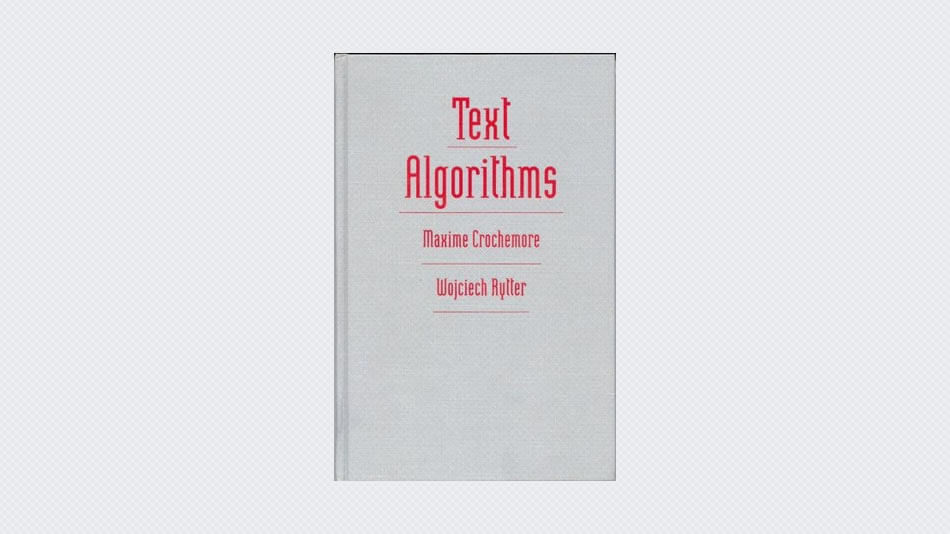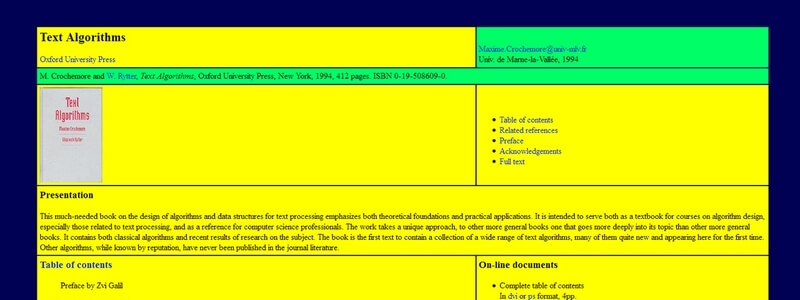The design of algorithms that process strings and texts goes back at least twenty five years. In particular, the last ten of those years have produced an explosion of new results. This progress is due in part to the human genome effort, to which string algorithms can make an important contribution.
While text algorithms can be viewed as part of the general field of algorithmic research, it has developed into a respectable subfield on its own. This subfield nicely combines theory and practice. The theory deals with symmetries and periodicities in strings, which in practice may lead to the development of fast new algorithms.
One measure of the vibrance of this new subfield is the ongoing success of a conference devoted to its study. The Conference on Combinatorial Pattern Matching will be holding its fifth meeting in the summer of 1994 to present theoretical results, new algorithms, and new applications of these algorithms.
Following the remarkable progress in this new field, Maxime Crochemore and Wojciech Rytter embarked on the right project at the right time—writing a textbook on text algorithms. Both authors have made important contributions to the field and therefore are excellent choices for the job.
Since the research on text algorithms continues, it is not possible to have a book that completely covers the area. Looking at the table of contents of this book, its fifteen chapters cover nicely many of the major developments in the field. Crochemore and Rytter have succeeded in producing a textbook that is as thorough as it is timely.





